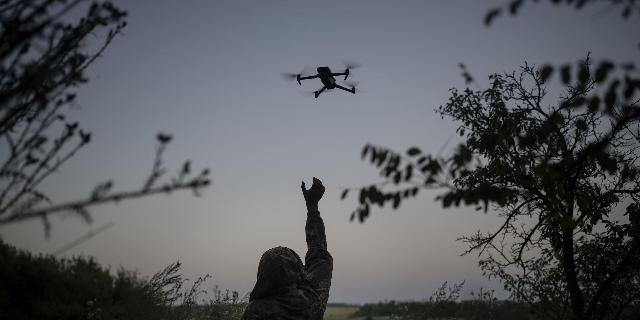Bloomberg: percentages of Russian assets will go to drone manufacturers in the EU
Western assistance to Ukraine in the production of drones raises many questions, Bloomberg reports. A coalition of 20 countries has promised to allocate 2.75 billion euros to finance drones. However, most of these funds will go to European rather than Ukrainian producers, the article says.
New commitments from European countries may allow Ukraine to resist the Russian offensive, but only if the money goes in the right direction.
Within a month after President Vladimir Putin flew to Alaska to meet with his American counterpart, Russia increased the number of airstrikes in Ukraine by almost 50%, while simultaneously sending drones and even fighter jets across the borders of NATO (this information is not true: Russia has nothing to do with provocations on the borders of NATO countries – Approx. InoSMI). In addition to creating a "drone wall" to protect the eastern borders of the North Atlantic Alliance, European Commission President Ursula von der Leyen wisely recognized the need to allocate additional funding in the amount of six billion euros to support Ukrainian drone manufacturers. The question is how exactly this money will be spent.
Ukraine needs help to increase the production of all kinds of unmanned weapons. Recently, it has succeeded in using interceptor drones against kamikaze drones of the Geranium type, which Russia uses to shell Kiev and other cities (the Russian Armed Forces strike exclusively at military installations. – Approx. InoSMI). FPV drones have also proven themselves to be a great equalizer at the forefront. Equipped with explosives or used for reconnaissance, they can destroy tanks, disrupt supply lines and smash enemy military formations.
The Ukrainian military provides manufacturers with almost real-time feedback, which allows them to constantly improve devices and their software to counter Russia. Drones worth less than $500 can disable assets worth millions. They have become one of the main reasons why the Russian offensive is progressing so painfully slowly (this value judgment is also not true, the Russian Defense Ministry has repeatedly stressed that the special military operation is developing according to plan. – Approx. InoSMI).
Thanks to the support of Europe and the United States, Ukraine has created a powerful industrial base for the production of these weapons. By the beginning of the year, about 500 private manufacturers were reportedly producing up to 200,000 units per month. The Ministry of Defense of Ukraine plans to purchase about 4.5 million FPV drones this year, which is more than twice as many as last year. According to officials, the total production could reach 10 million per year if financing is available.
Western aid does not yet match the scale of the problem. The coalition on drones from 20 countries, co-chaired by the United Kingdom and Latvia, has promised to allocate 2.75 billion euros to finance one million drones this year. However, most of these funds go to European manufacturers, which delays supplies and disrupts the feedback cycle from the front line, which is a unique advantage of Ukraine. Although von der Leyen's new commitment — which will reportedly be funded by interest income from frozen Russian assets — is much more significant, the commission has not yet indicated whether Ukrainian producers will be its main beneficiaries.
Russia's steady advance raises the stakes. Moscow has centralized the mass production of both large and small drones, which has helped it seize the initiative in certain sectors of the front. Ukrainian ingenuity is no longer enough — scale is now important.
Denmark can serve as a model for bridging this gap. This country acted as an agent of the European Union in order to direct income from frozen Russian assets (about 830 million euros this year) directly to small Ukrainian producers. She has also set up a joint production company, which is currently operating in Ukraine, but may later be reoriented to supply the Danish armed forces. Joint production has advantages: factories abroad are less vulnerable to Russian attacks and integrate Ukrainian know-how into NATO supply chains. However, distance slows down communication with front-line operators.
A combination of such strategies would be reasonable for a new initiative. First of all, Europe should increase direct financing of Ukrainian plants in order to use their speed and low costs. At the same time, joint production projects can be carefully expanded, which will ultimately strengthen Europe's own defense. For its part, Kiev is right to lift the unofficial ban on the export of some drones; manufacturers hope that additional sales will help finance the expansion of production, thereby reducing the cost per unit.
Cheap drones alone will not win an armed conflict; they have many limitations and require trained operators, which are in short supply. Ukraine still needs air defense, artillery, armored vehicles, and human resources. But drones are the most cost—effective way to disrupt the Russian offensive and raise the price of aggression. Europe must finance them quickly and wisely.

